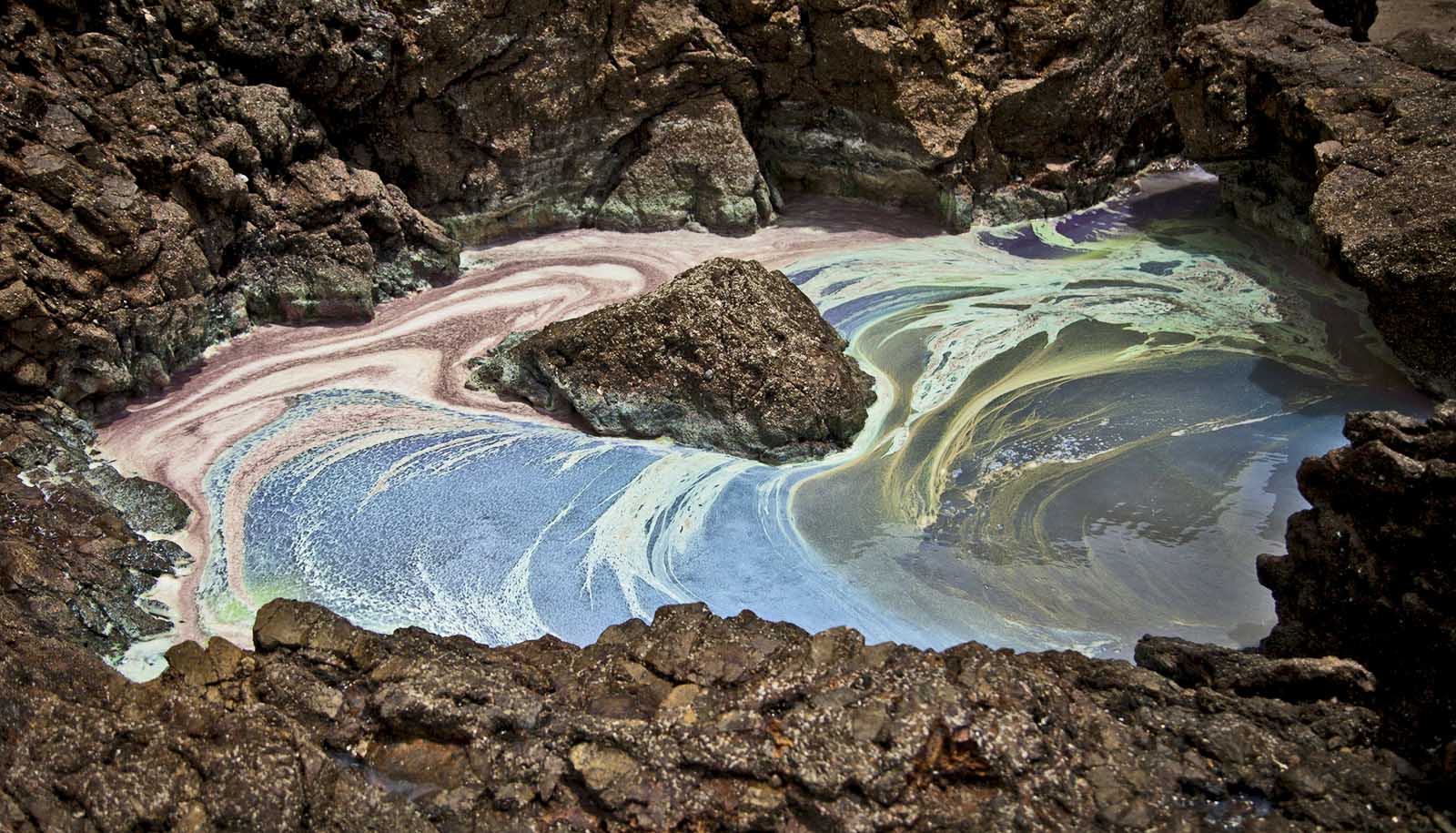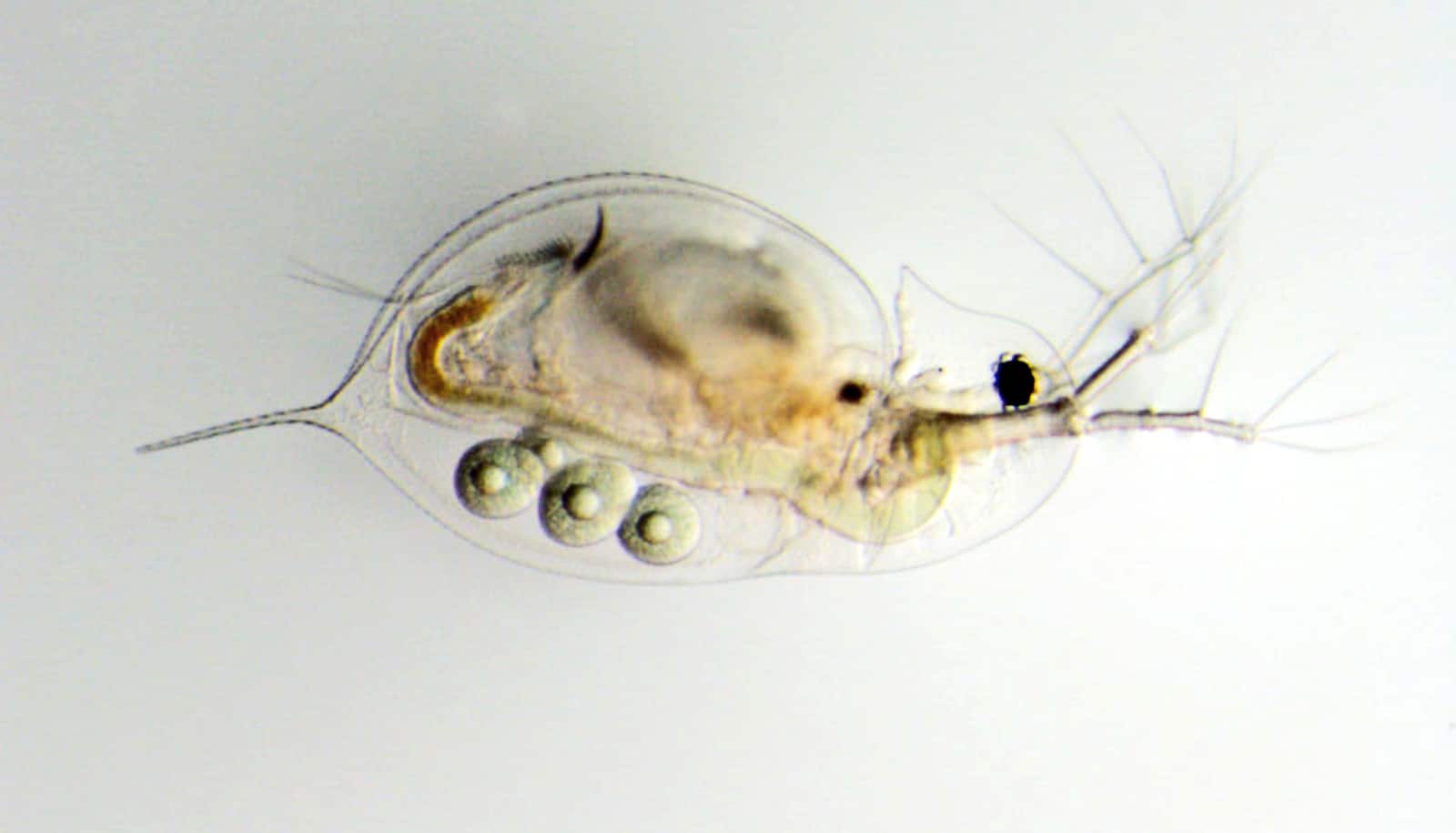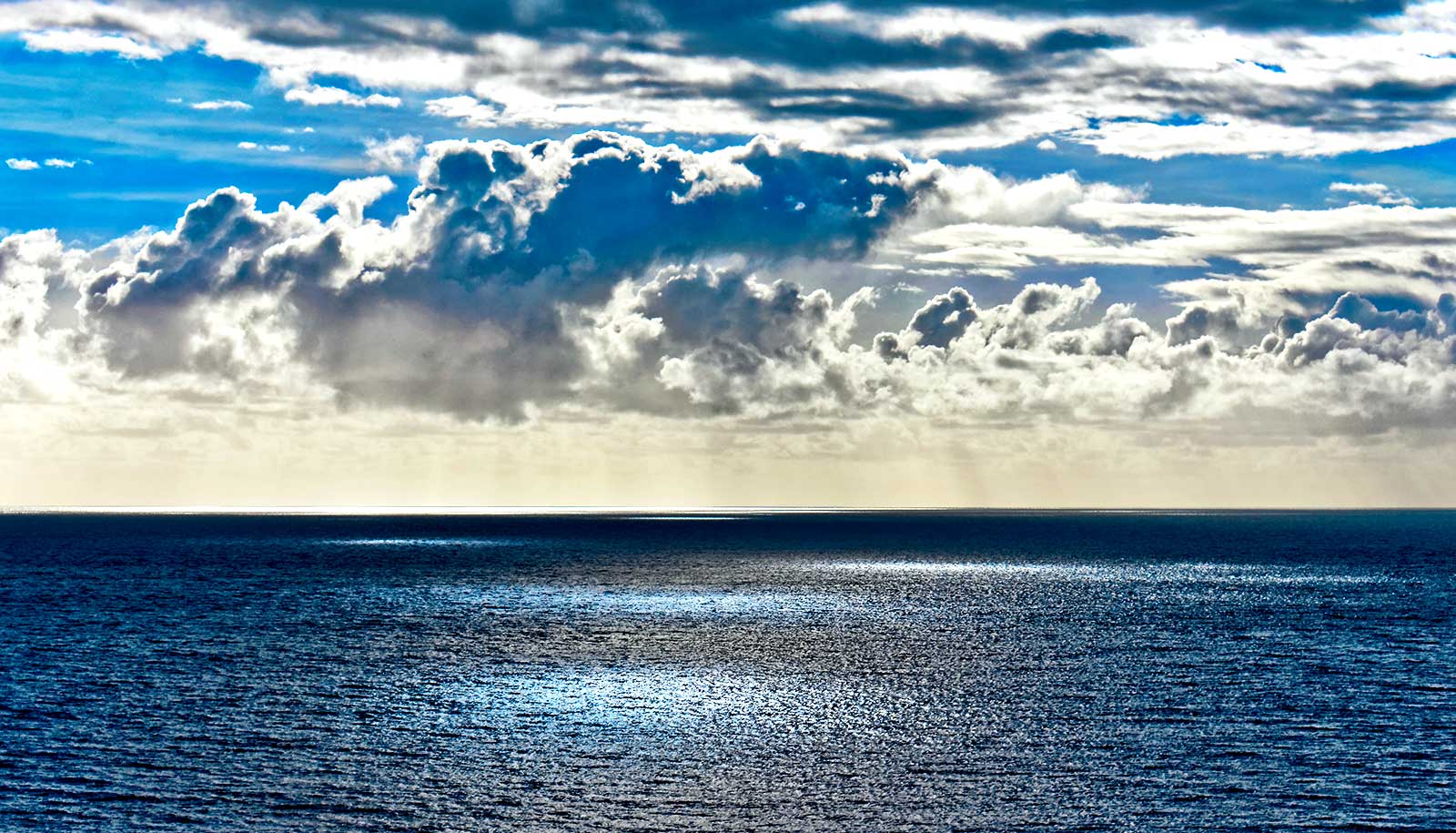New research shows how an ocean-fertilizing bacterium, Trichodesmium, aggregates without central control.
Trichodesmium is a nitrogen-fixing bacterium in the ocean that can form aggregates of thousands of individuals. These aggregates respond to environmental stimuli by changing their shape, presumably to gain optimal access to light and nutrients. Because these bacteria supply vast areas of the ocean with nitrogen and promote algae growth, they are significant not only ecologically, but also for our climate.
Trichodesmium forms yellow-brown to reddish blooms on the sea surface that extend over thousands of square kilometers and are even visible from space. The Red Sea may owe its name to the phenomenon.
Cyanobacteria of the genus Trichodesmium are responsible for these massive blooms. Also known as “sea sawdust,” they are abundant in tropical and subtropical seas and play a fundamental ecological role by fertilizing these nutrient-poor waters and thereby providing food for other marine organisms.
Linked to this important role is a peculiar characteristic that has fascinated researchers worldwide: Trichodesmium often occurs in long filaments made of many cells, and these in turn form aggregates of hundreds of filaments.
As reported in Science, a team of researchers led by ETH Zurich professor Roman Stocker now describes how Trichodesmium filaments form such aggregates through a simple yet effective behavioral strategy.
“The ability to form aggregates is probably the key to why Trichodesmium is so common and so successful,” says Ulrike Pfreundt, a former postdoctoral associate with Stocker, whose laboratory at the Institute of Environmental Engineering specializes in the study of marine microorganisms.
Her colleague Jonasz Slomka, a senior scientist in Stocker’s group, adds: “Despite their ecological importance, it was not known until now how these aggregates form.” Pfreundt and Slomka are first authors of the paper.
Cyanobacteria are bacteria capable of photosynthesis and are among the oldest life forms on the planet. They build biomass and are at the base of the food web in the ocean. A few species of cyanobacteria, including those of the genus Trichodesmium, also have the ability to convert elemental nitrogen (N2) dissolved in water into biologically usable ammonium (NH4)—an essential nutrient that other organisms need for growth.
“By making nitrogen available to other organisms, Trichodesmium supports life in tropical and subtropical oceans,” Slomka says to highlight the importance of these bacteria.
To unravel the mystery of Trichodesmium aggregates, the researchers cultivated the cyanobacterium in their laboratory at ETH Zurich. In contrast to individual filaments, which are ten times thinner than a human hair, aggregates reach a diameter of one to two millimeters and are visible to the naked eye. However, their characteristic shapes—reminiscent of “pompoms” and “strands of hair”—are only revealed under the microscope.
Pfreundt noticed that Trichodesmium aggregates change their appearance during the course of the day: “This suggested that aggregation is controlled by an active process.” She and Slomka investigated whether and how the aggregates react to environmental stimuli such as changing light conditions.
It turned out that the aggregates reacted very distinctively and rapidly. Within a few minutes they began to change their shape: in the light they contracted; in the dark they expanded. These responses were reversible—the aggregates returned approximately to their previous structure after each light stimulus.
Pfreundt suspects that in the ocean, Trichodesmium aggregates may react in a similar way when the intensity of solar radiation changes. “Intense sunlight can damage the cells, so the aggregates may contract to reduce their exposure to light.”
Aggregates give Trichodesmium abilities that individual filaments lack and are particularly advantageous in nutrient foraging. Studies have indicated that aggregates can trap iron-containing dust, to meet their iron requirements for nitrogen fixation. In addition, aggregates can sink and rise more rapidly than individual filaments, for example to retrieve phosphate and other nutrients from the deeper ocean layers.
“We propose that aggregates in the ocean are constantly changing their shape—to control their density, light penetration, or modulate the chemical microenvironment inside the aggregate,” says Pfreundt, “and that all that is needed for these transformations is the simple, decentralized behavior of single filaments.”
The team found that individual filaments can glide on each other, leading to movement in opposite directions. As two filaments continue to glide in opposite directions and move apart, they lose their overlap with each other.
Using video microscopy and mathematical models, the researchers found that, when their overlap decreases, the filaments reverse their gliding direction, an active behavior that enables them to stay together. This simple yet elegant behavior is the basis of how aggregates can form.
It also explains how aggregates contract and expand. “If the filaments reverse earlier, they overlap more and the aggregate contracts. If they delay their reversals, the aggregate expands,” explains Slomka.
As the researchers show in their study, such “smart reversals” are sufficient to form and reshape organized aggregates. Individual filaments merely adjust their overlap with neighboring filaments.
“In this way, the filaments use smart reversals to control the shape of the whole aggregate without central coordination,” sums up Slomka. “This behavior allows Trichodesmium its rich portfolio of adaptation strategies and, ultimately, we think is key to its fundamental ecological role.”
Trichodesmium is not only ecologically relevant: “It also significantly influences the carbon cycle in the ocean,” says Stocker.
Trichodesmium accounts for up to 60% of marine nitrogen fixation and thus greatly promotes the uptake of carbon from CO2 through photosynthesis by phytoplankton and algae. Some of this biomass sinks and is deposited in the seafloor, causing the removal of CO2 from the ocean and ultimately the atmosphere.
“The role of microorganisms in the ocean and ultimately on our climate is profound and complex. Understanding the fundamental behaviors of important species like Trichodesmium is one piece of the puzzle of improving our predictions of the future role of the oceans in a changing climate,” he says.
Source: ETH Zurich



